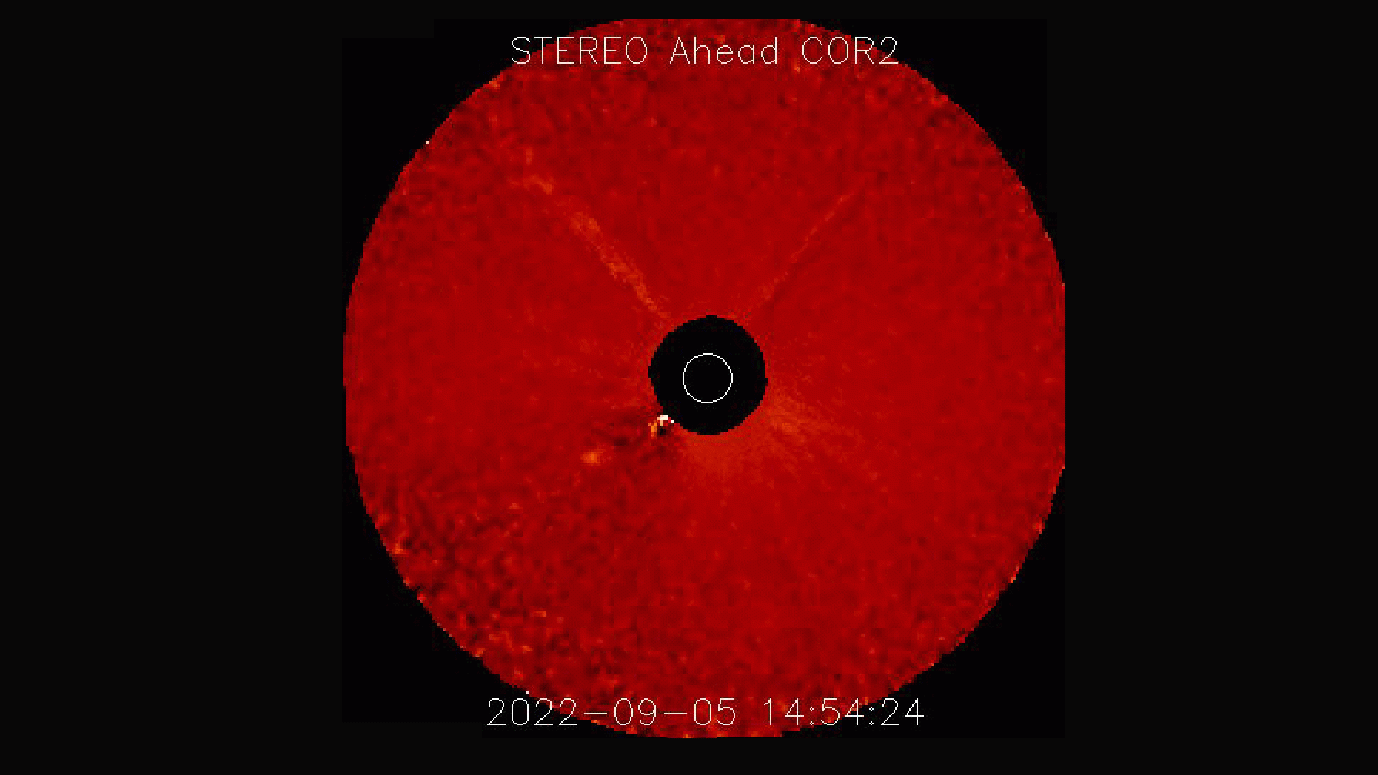Science
Related: About this forumShock wave from sun has opened up a crack in Earth's magnetic field, and it could trigger a geomagne
By Ben Turner published 1 day ago
The storm is classed as a G1 storm, so is expected to be fairly mild.

A giant coronal mass ejection bursts from the sun toward Venus on Sept. 5, 2022. (Image credit: NASA/STEREO)
A mysterious shock wave in a gust of solar wind has sent a barrage of high-speed material smashing into Earth’s magnetic field, opening up a crack in the magnetosphere. The barrage of plasma could lead to a geomagnetic storm today (Dec. 19), according to spaceweather.com.
The shockwave’s origins aren’t exactly known, but scientists think it could have come from a coronal mass ejection launched by the sunspot AR3165, a fizzing region on the sun’s surface that released a flurry of at least eight solar flares on Dec. 14, causing a brief radio blackout over the Atlantic Ocean.
Sunspots are areas on the sun's surface where powerful magnetic fields, created by the flow of electrical charges, knot into kinks before suddenly snapping. The resulting release of energy launches bursts of radiation called solar flares, or plumes of solar material called coronal mass ejections (CMEs). Once launched, CMEs travel at speeds in the millions of miles per hour, sweeping up charged particles from the solar wind to form a giant, combined wavefront that (if pointed toward Earth) can trigger geomagnetic storms.
Geomagnetic storms occur when energetic solar debris (mostly consisting of electrons, protons and alpha particles) gets absorbed by, and subsequently compresses, Earth’s magnetic field. The solar particles zip through the atmosphere near the poles where Earth's protective magnetic field is weakest and agitate oxygen and nitrogen molecules — causing them to release energy in the form of light to form colorful auroras such as the northern lights.
More:
https://www.livescience.com/shock-wave-opens-crack-in-magnetosphere
2naSalit
(92,695 posts)Space weather enthusiasts' dashboard:
https://www.swpc.noaa.gov/content/space-weather-enthusiasts-dashboard
Judi Lynn
(162,384 posts)2naSalit
(92,695 posts)Happy to share. ![]()
airplaneman
(1,273 posts)2naSalit
(92,695 posts)But it's all the same data from NASA and the like. It has a different up front focus, though.